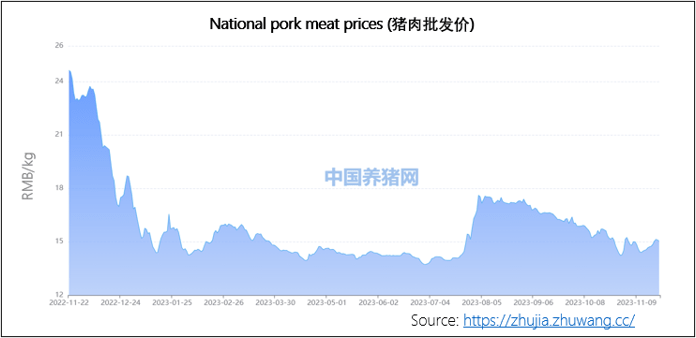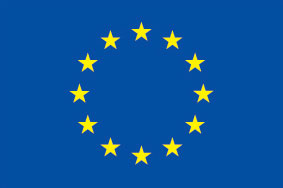Chinese pork wholesale prices increased in the third quarter of 2023 compared to the second quarter. Pork prices increased by 25% in the beginning of August, and, in late November, prices are stabilising at around 15 yuan/Kg which is still higher than the previously stabilized price in the second quarter.
 Chinese government has played a proactive role in some of the price fluctuations, notably stockpiling 20,000 tonnes of pork in July 2023 to replenish national reserves. This move, crucial for maintaining market stability, is a response to pork’s central role in the Chinese diet. Given that pork accounts for approximately 60% of meat consumption, the Chinese government strictly controls the market in fear of risks of deflationary pressure, affecting overall consumer spending [1].
Chinese government has played a proactive role in some of the price fluctuations, notably stockpiling 20,000 tonnes of pork in July 2023 to replenish national reserves. This move, crucial for maintaining market stability, is a response to pork’s central role in the Chinese diet. Given that pork accounts for approximately 60% of meat consumption, the Chinese government strictly controls the market in fear of risks of deflationary pressure, affecting overall consumer spending [1].
In terms of pork production, the latest data from the National Bureau of Statistics reveals that China’s pork output in the first nine months of 2023 experienced a 3.6% increase compared to the previous year, totalling 43.01 million tons. This rise can be attributed to Chinese breeders who have expanded their production in recent years. Notably, the population of breeding females remained higher than the previous year’s figures until July, after which a decline began, as indicated by data from the agriculture ministry. This year, producers maintained larger herds, anticipating a surge in meat demand driven by a stronger economic recovery. However, contrary to these expectations, consumption levels have largely remained stable [2].
In terms of international trade, the import value of pork in China has seen a 7.5% value increase in the first ten months of 2023, compared to the previous year. This trend is significant, even though the overall volume has slightly decreased by -0.5%. Spanish and Portuguese exporters, despite facing internal challenges and a strategic focus on the EU market, have maintained a strong position remaining as market leaders.
In terms of average CIF prices for 2023 until October, Spain and Portugal have experienced an increase of 5.0% and 4.9% respectively, compared to previous year. This increase is below the average total market increase of 8.1%. On the other side, Brazil’s increase in CIF prices reached 10.1% [3].
[1]https://asia.nikkei.com/Economy/Inflation/China-consumer-prices-stagnate-raising-fears-of-deflation (www.asia.nikkei.com)
[2] Porkbusiness (www.porkbusiness.com)
[3] General Administration of Customs of the People’s Republic of China (stats.customs.gov.cn/)




